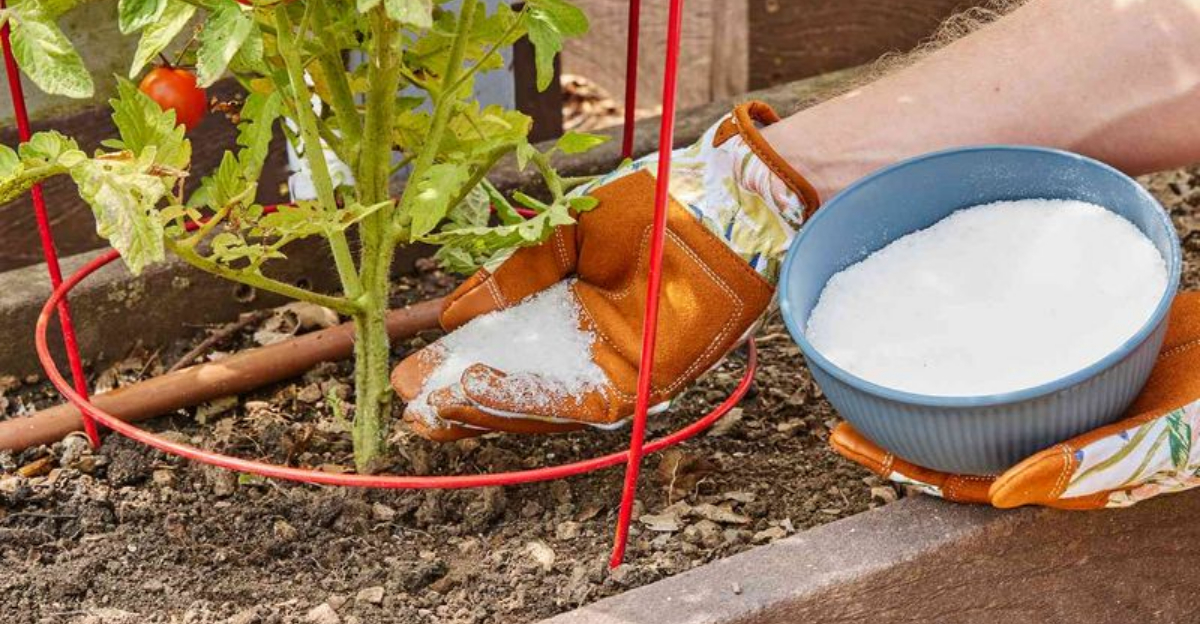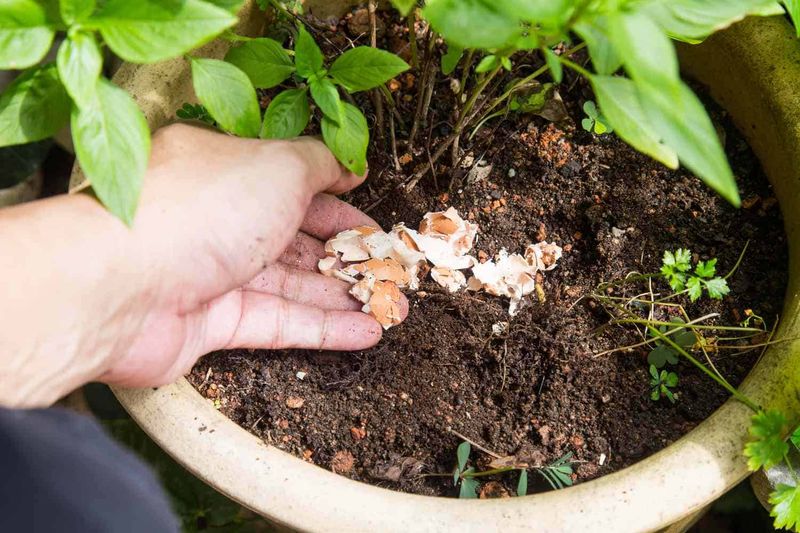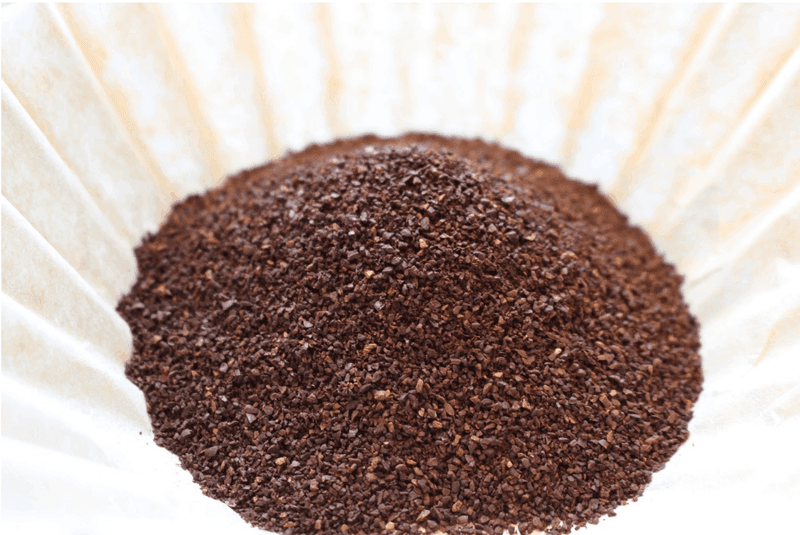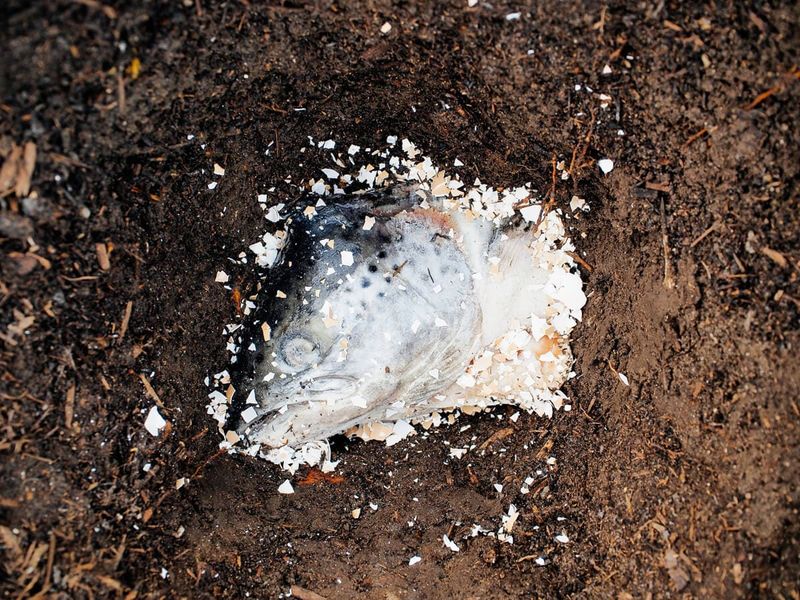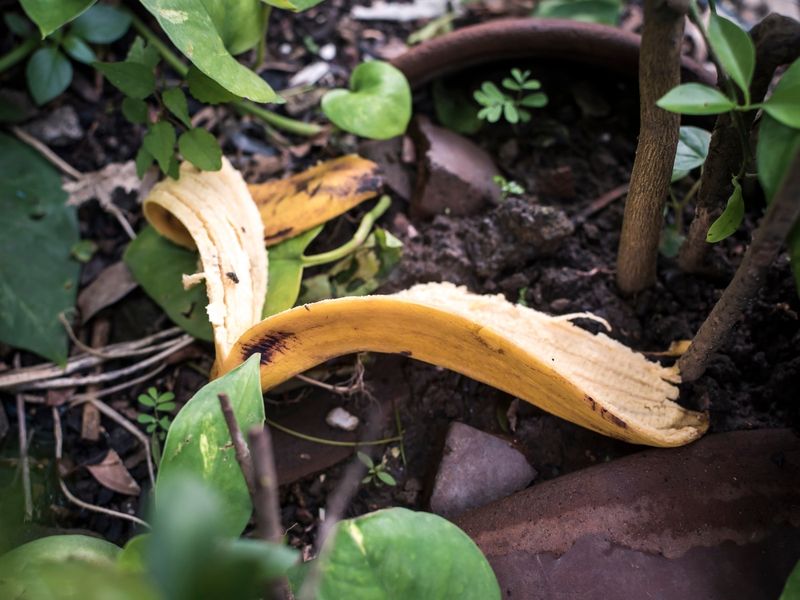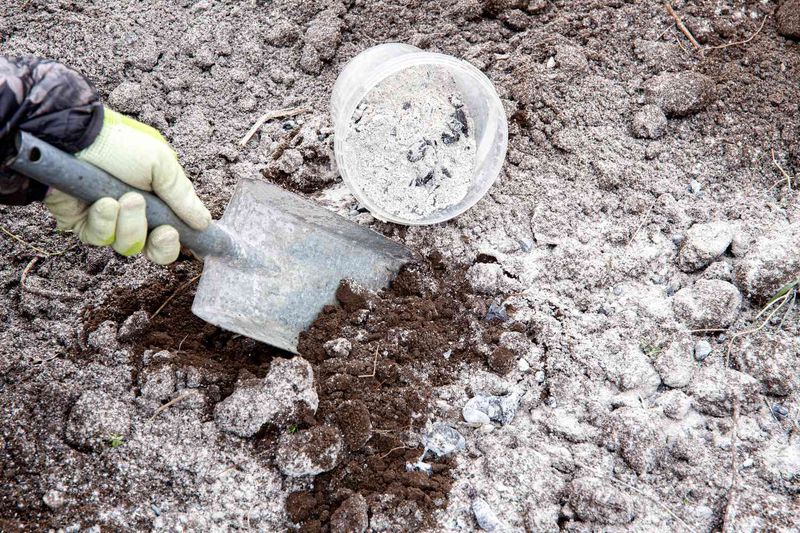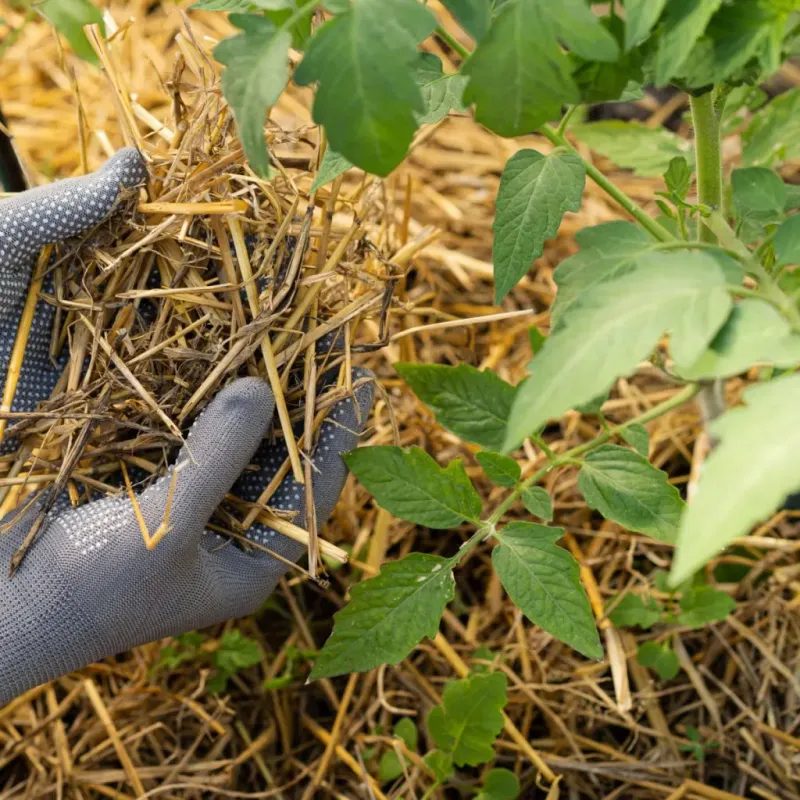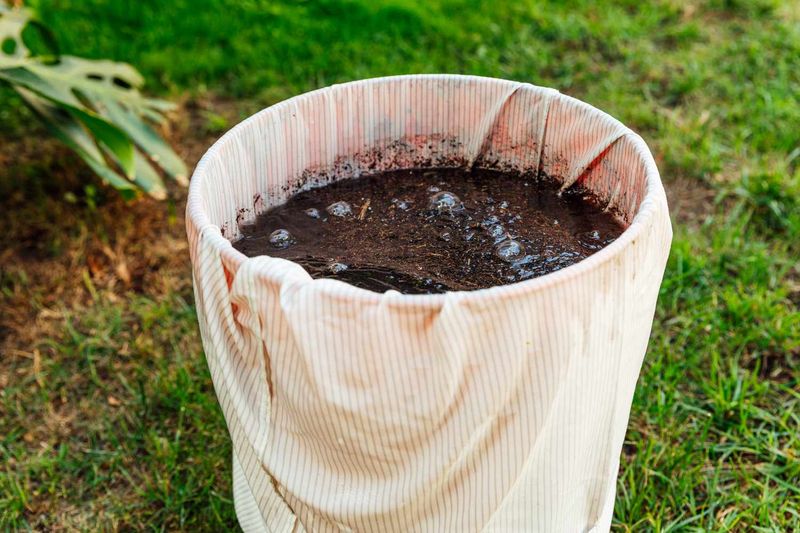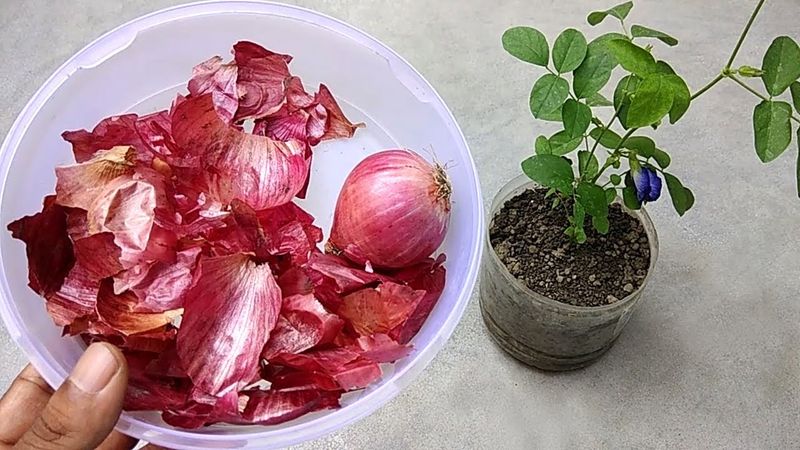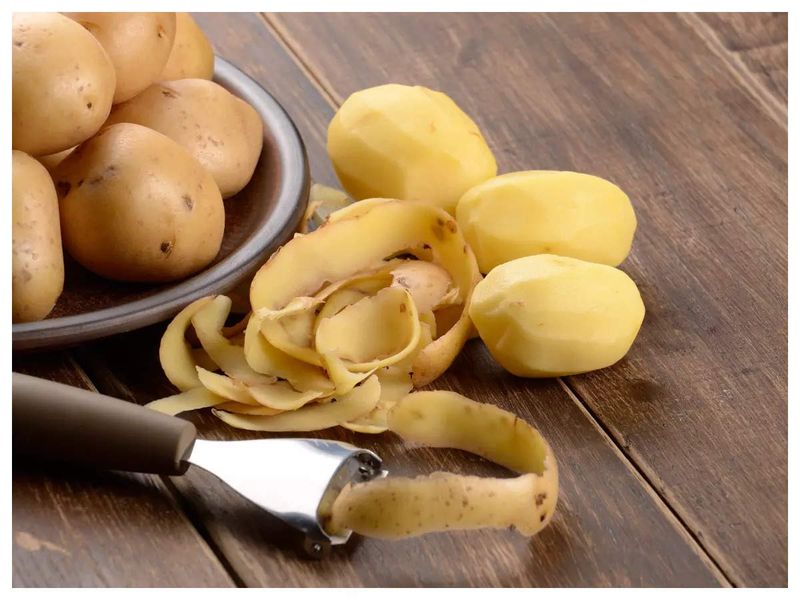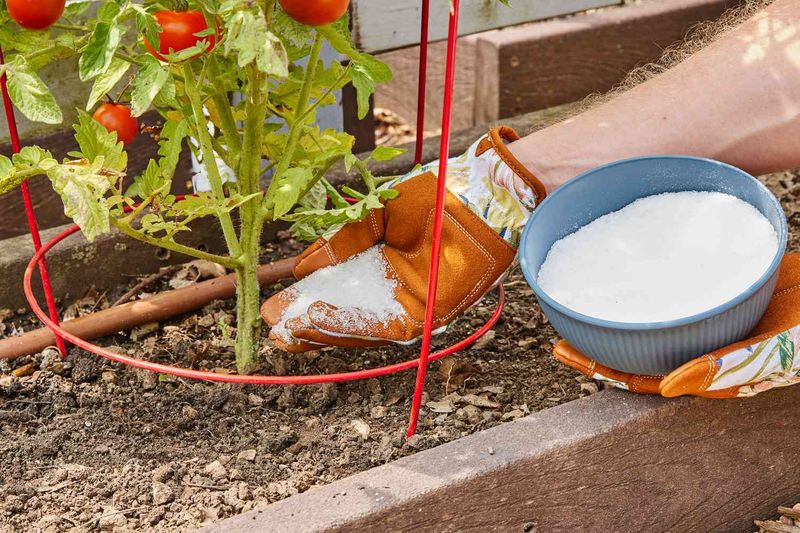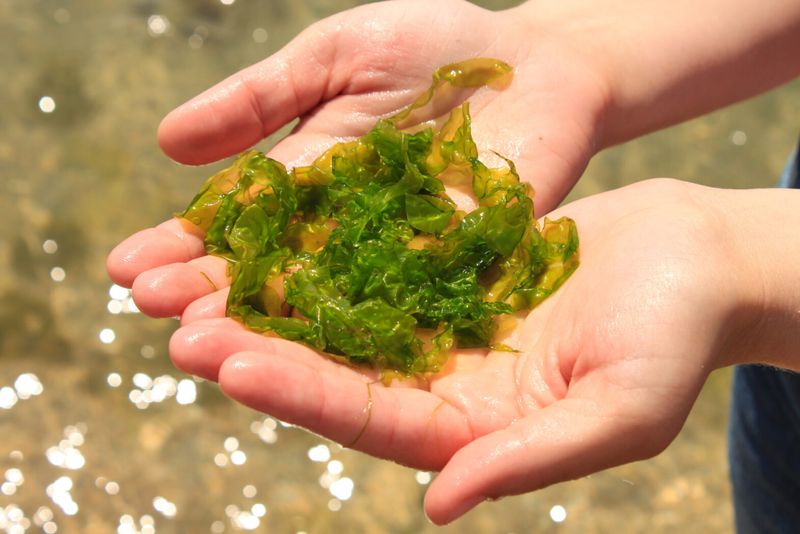Unlock the secret to thriving tomato plants with these unexpected garden scraps that not only enrich the soil but also deter pests and enhance growth.
Discover how everyday kitchen waste can become a gardener’s treasure, transforming your tomato patch into a flourishing haven.
Whether you’re a seasoned gardener or a curious newbie, these practical tips will offer fresh insights into sustainable gardening practices, ensuring your tomatoes are the talk of the neighborhood.
Read on to explore these unconventional yet highly effective plant-nourishing solutions.
1. Eggshells
Crushed eggshells provide an excellent source of calcium, crucial for preventing blossom end rot in tomatoes. Calcium fortifies cell walls and supports overall plant health.
To use, rinse and dry the shells before crushing them into small pieces. Sprinkle these around your tomato plants to enhance soil structure and drainage.
As they decompose, eggshells release nutrients slowly, ensuring a prolonged supply for growing plants. This practice also keeps slugs and snails away, as the sharp edges are a natural deterrent. Embrace this sustainable gardening tip for healthier, more resilient tomatoes.
2. Coffee Grounds
Used coffee grounds are an excellent nitrogen source, a key nutrient for vigorous tomato growth. When sprinkled around plants, they boost soil acidity and improve drainage.
This organic amendment encourages beneficial microorganisms, enhancing the soil’s fertility. Moreover, the texture of coffee grounds deters pests like slugs and snails, protecting your plants naturally.
Ensure you use them sparingly, as excessive amounts can lead to over-acidification. For optimal results, mix with other compost materials. Embrace this simple, eco-friendly way to energize your tomato plants while recycling kitchen waste.
3. Fish Scraps
Fish scraps are a powerhouse of nutrients, providing nitrogen, potassium, and phosphorus essential for robust tomato growth. This traditional practice dates back to Native American gardening techniques.
Bury the scraps deep to avoid attracting wildlife, ensuring they decompose underground where roots can absorb nutrients.
This method not only boosts soil fertility but also improves microbial activity, fostering a thriving plant environment. While the smell might be a deterrent initially, the long-term benefits are worth it. Your tomatoes will grow stronger and produce more abundant, flavorful fruit.
4. Banana Peels
Banana peels are rich in potassium, a vital nutrient that supports tomato plant health. By decomposing banana peels in the soil, you release potassium, which strengthens plant roots and enhances fruit development. Simply chop the peels and bury them around your tomato plants.
As they break down, they also improve soil texture, promoting better water retention and aeration. This natural method reduces the need for chemical fertilizers, making your garden more eco-friendly.
Enjoy the added benefit of deterring aphids, thanks to the natural oils in banana peels that repel these pests.
5. Wood Ash
Wood ash, a byproduct of burned wood, offers potassium and calcium, crucial for healthy tomato plants. It’s a smart way to recycle fireplace or stove waste.
Apply wood ash sparingly around your tomato plants to amend soil pH, particularly in acidic soils. This increases nutrient availability, promoting stronger plant growth.
Be cautious, as excessive use can cause alkalinity. Monitor your soil’s pH to ensure balanced application. Wood ash also deters pests like slugs and beetles, providing an additional layer of protection. Embrace this age-old method for lush, productive tomato plants.
6. Grass Clippings
Grass clippings are a fantastic nitrogen source, fueling tomato growth. As a mulch, they conserve moisture and suppress weeds, promoting healthier plants.
Spread a thin layer around your tomato plants, allowing the clippings to decompose and release nutrients into the soil. This natural mulch also regulates soil temperature, enhancing root development.
Avoid thick layers, as they may become compacted and hinder water flow. Rotate frequently to ensure aeration. This eco-friendly method recycles lawn waste while nurturing your tomato garden, leading to a bountiful harvest season.
7. Compost Tea
Compost tea is a liquid fertilizer derived from soaking compost in water, rich in nutrients and beneficial microorganisms. It enhances soil life, boosting tomato growth.
Spray or water your plants with this nutrient-rich solution to improve soil structure and fertility. This organic practice not only supports plant health but also enhances disease resistance.
Regular application promotes lush foliage and increased fruit production. Prepare by steeping compost in water for a day or two, ensuring a potent blend. Embrace this sustainable, cost-effective fertilizing strategy to supercharge your tomato crop naturally.
8. Tea Leaves
Used tea leaves are more than just waste; they provide nitrogen and minerals that benefit tomato plants. When decomposed, they enhance soil texture and fertility.
Simply scatter them around your tomatoes or mix them into the soil. This organic amendment attracts earthworms, which further enrich the soil ecosystem.
Ensure you use naturally processed tea leaves to avoid any chemical residues. This sustainable practice not only recycles kitchen waste but also nurtures your tomato plants, leading to a healthier, more productive garden. Enjoy the results of this simple yet effective gardening technique.
9. Onion Peels
Onion peels are often overlooked, yet they hold significant nutritional value for tomatoes. Rich in antioxidants, they boost plant immunity and growth.
Add them to your compost pile or use directly as mulch to enhance soil health. As they decompose, they release nutrients while deterring pests with their natural sulfur compounds.
This sustainable gardening practice reduces waste and enriches your soil. Embrace onion peels as a resourceful addition to your tomato-growing routine, fostering stronger, more resilient plants. Witness the transformation in your garden as your tomatoes thrive like never before.
10. Potato Peelings
Potato peelings, rich in nutrients like phosphorus and potassium, support tomato plant health and growth. Incorporate them into your compost or bury directly around plants.
As they break down, they enhance the soil’s nutrient profile, benefiting the plant’s root development. This eco-friendly method also improves soil texture, aiding water retention.
Be cautious to avoid the spread of diseases by ensuring peelings are free from blight. Embrace potato peelings as a valuable garden resource for thriving tomato plants, ensuring a bountiful, delicious harvest by the end of the season.
11. Epsom Salt
Epsom salt, a natural source of magnesium and sulfur, is ideal for boosting tomato plant health. Dissolve in water and apply as a foliar spray or soil amendment.
Magnesium is crucial for chlorophyll production, enhancing photosynthesis and improving plant vigor. Regular application reduces blossom end rot, ensuring healthy fruit.
This approach is both cost-effective and eco-friendly, providing essential nutrients without synthetic chemicals. Integrate Epsom salt into your gardening routine for vibrant, productive tomato plants. Enjoy the lush growth and bountiful harvest that follows this simple yet powerful gardening tip.
12. Seaweed
Seaweed, a natural multi-nutrient fertilizer, enhances tomato growth with its rich mineral content. Gathered from the shore, it provides potassium, nitrogen, and trace elements.
Use fresh or dried seaweed as mulch or incorporate into compost. It improves soil structure, promotes healthy root development, and increases disease resistance.
This sustainable practice enriches your garden while reducing reliance on chemical fertilizers. Be mindful of harvesting regulations to ensure eco-friendly practices. Embrace seaweed as a powerful ally in your gardening endeavors, nurturing robust, fruitful tomato plants that thrive all season.
13. Molasses
Molasses is a surprising garden ally, brimming with minerals and sugars that invigorate tomato plants. Use as a soil amendment to boost microbial activity and enhance nutrient uptake.
Dilute in water and apply to the soil, fostering a thriving ecosystem for beneficial microorganisms. This promotes healthier soil, leading to stronger plants and improved yield.
This natural solution also adds organic matter to the soil, supporting long-term fertility. By incorporating molasses into your gardening routine, you’ll experience sweeter, more robust tomatoes, enriching your harvest with this unique, eco-friendly technique.
14. Citrus Peels
Citrus peels offer a dual benefit for tomato gardens: nutrient enrichment and pest deterrence. Rich in nitrogen and phosphorus, they enhance soil fertility.
Scatter peels around your plants or add them to compost. Their natural oils repel pests like aphids and ants, providing natural protection.
As they decompose, they release nutrients slowly, ensuring a sustained supply for your tomatoes. This practice reduces waste, recycles kitchen scraps, and enriches your garden. Incorporate citrus peels into your routine for a flourishing, pest-free tomato patch that thrives naturally season after season.
